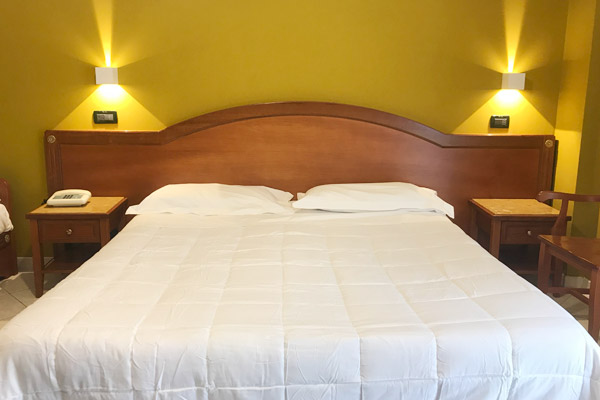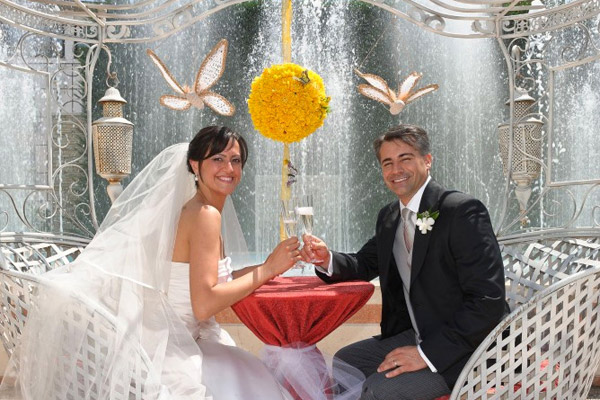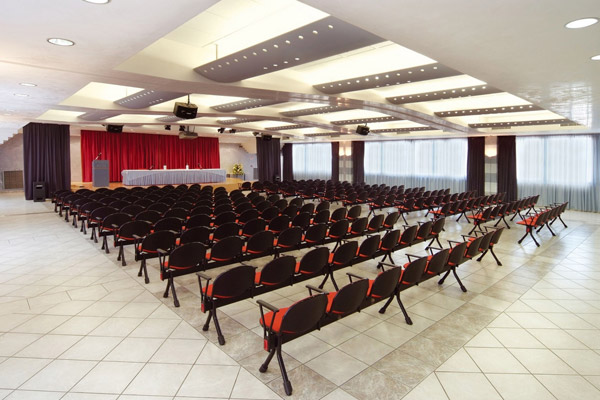Biograpy Padre Pio
Pio of Pietrelcina (Italian: Pio da Pietrelcina) O.F.M. Cap., commonly known as Padre Pio (May 25, 1887 – September 23, 1968), was a friar, priest, stigmatist and mystic[1] of the Roman Catholic Order of Friars Minor Capuchin. Padre Pio became famous for bearing the stigmata for most of his life. This condition generated much interest and controversy around him. He is now venerated as a saint in the Catholic Church.
Pio was born Francesco Forgione and given the name of Pius (Italian: Pio) when he joined the Capuchins. After his beatification in 1999 he was canonized by Pope John Paul II on June 16, 2002.
On September 20, 1918, while hearing confessions, Padre Pio had his first occurrence of the stigmata: bodily marks, pain, and bleeding in locations corresponding to the crucifixion wounds of Jesus Christ. This phenomenon continued for fifty years, until the end of his life. The blood flowing from the stigmata smelled of perfume or flowers, a phenomenon mentioned in stories of the lives of several saints and often referred to as the odour of sanctity. Though Padre Pio would have preferred to suffer in secret, by early 1919, news about the stigmatic friar began to spread in the secular world. Padre Pio’s wounds were examined by many people, including physicians.
People who had started rebuilding their lives after World War I, began to see in Padre Pio a symbol of hope.Those close to him attest that he began to manifest several spiritual gifts, including the gifts of healing, bilocation, levitation, prophecy, miracles, extraordinary abstinence from both sleep and nourishment (one account states that Padre Agostino recorded one instance in which Padre Pio was able to subsist for at least 20 days at Verafeno on only the Eucharist without any other nourishment), the ability to read hearts, the gift of tongues, the gift of conversions, and the fragrance from his wounds.
His stigmata, regarded as evidence of holiness, were studied by physicians whose independence from the Church is not known. The observations were unexplainable and the wounds never became infected. His wounds healed once but reappeared. They were examined by Luigi Romanelli, chief physician of the City Hospital of Barletta, for about one year. Dr. Giorgio Festa, a private practitioner, also examined them in 1920 and 1925. Professor Giuseppe Bastianelli, physician to Pope Benedict XV, agreed that the wounds existed but made no other comment. Pathologist Dr. Amico Bignami of the University of Rome also observed the wounds but could make no diagnosis. Both Bignami and Dr. Giuseppe Sala commented on the unusually smooth edges of the wounds and lack of edema. Dr. Alberto Caserta took x-rays of Padre Pio's hands in 1954 and found no abnormality in the bone structure.
He was said to be embarrassed by this condition and most photographs show him wearing red mittens or black coverings on his hands and feet where the bleeding occurred. At the time of Padre Pio's death, his body appeared unwounded, with no sign of scarring. There was a report that doctors who examined his body found it empty of all blood.
There were both religious and non-religious critics who accused Padre Pio of faking his stigmata, saying he used carbolic acid to make the wounds. In 2007, The Telegraph reported on the book, The Other Christ: Padre Pio and 19th Century Italy, by the historian Sergio Luzzatto. He recounted that in 1919, according to one document in the Vatican's archive, Padre Pio requested carbolic acid from a pharmacist. She said it was for sterilization. The Catholic Anti-Defamation League said Luzzatto was spreading "anti-Catholic libels" and needed to learn more about religion.
The Church did not find this a problem and dismissed charges that he had faked the stigmata. "The boys had needed injections to fight the Spanish Flu which was raging at that time. Due to a shortage of doctors, Padres Paolino and Pio administered the shots, using carbolic acid as a sterilizing agent.”
Padre Pio died in 1968 at the age of 81. His health deteriorated in the 1960s but he continued his spiritual works. On September 21, 1968, the day after the 50th anniversary of his receiving the stigmata, Padre Pio felt great fatigue. The next day, on September 22, 1968, he was supposed to offer a Solemn High Mass, but feeling weak, he asked his superior if he might say a Low Mass instead, as he had done daily for years. Due to the large number of pilgrims present for the Mass, Padre Pio's superior decided the Solemn High Mass must proceed. Padre Pio carried out his duties but appeared extremely weak and fragile. His voice was weak and, after the Mass had concluded, he nearly collapsed while walking down the altar steps. He needed help from his Capuchin brothers. This was his last celebration of the Mass.
Early in the morning of September 23, 1968, Padre Pio made his last confession and renewed his Franciscan vows. As was customary, he had his rosary in his hands, though he did not have the strength to say the Hail Marys aloud. Till the end, he repeated the words "Gesù, Maria" (Jesus, Mary). At around 2:30 a.m., he said, "I see two mothers" (taken to mean his mother and Mary). At 2:30 a.m. he died in his cell in San Giovanni Rotondo with his last breath whispering, "Maria!".
His body was buried on September 26 in a crypt in the Church of Our Lady of Grace. His Requiem Mass was attended by over 100,000 people. He had often said, "After my death I will do more. My real mission will begin after my death.". The accounts of those who stayed with Padre Pio till the end, state that the stigmata had completely disappeared without a scar. Only a red mark "as if drawn by a red pencil" remained on his side but it disappeared.
(source: Wikipedia)
4 Star Services
OUR GUESTS’ reviews

There is nothing negative I can say about this hotel. If you have a car there is a parking underneath the hotel. Don't even bother to search for a restaurant cause the food at the hotel is good...

We stayed here for 2 nights and loved it, no complaints whatsoever, food was lovely(especially the pasta) and staff were friendly, if in the area again I would look to stay here again...

Our stay in the Hotel Parco Delle Rose in San Giovanni Rotondo, was a plesant and enjoyable experience. Hotel facilities are excellent for all age groups, including swimming pool, tennis courts...







